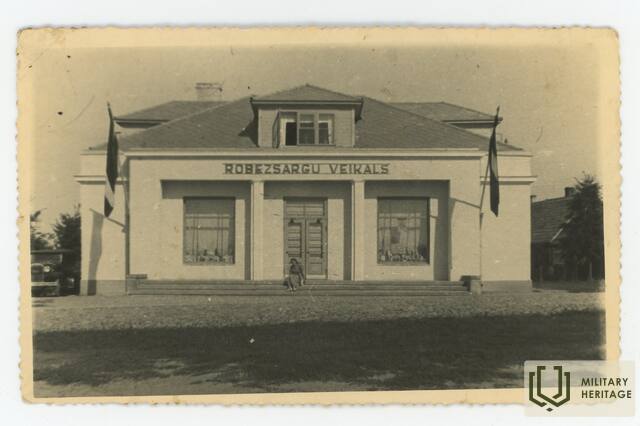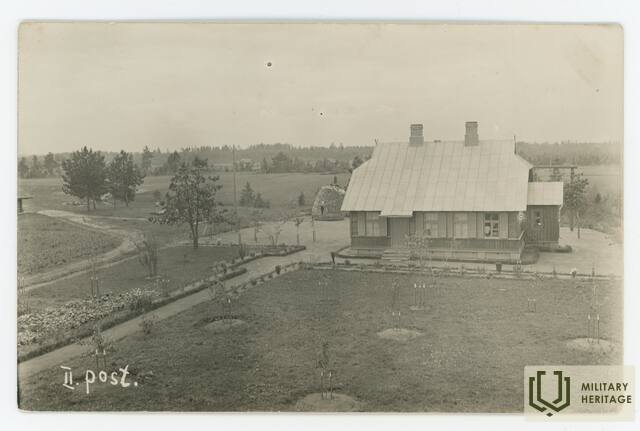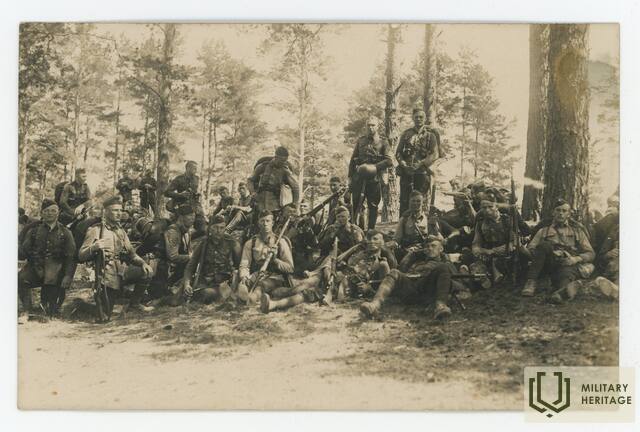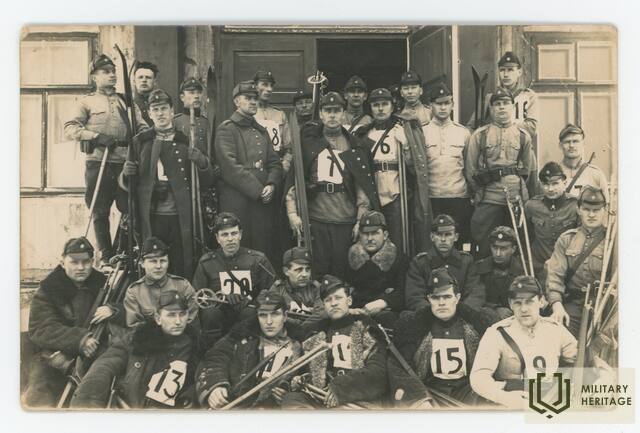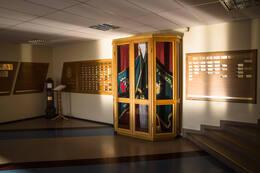Border Guard in Latgale during the time of Colonel Ludwig Bolstein (1935–1940)
In 1935–1940, under the leadership of Colonel Ludwig Bolstein, an outstanding commander and patriotic leader, the border guard experienced prosperity – new border guard buildings were built, in which their families also lived.
In 1935–1940, under the leadership of Colonel Ludwig Bolstein, an outstanding leader and patriotic leader, the border guard experienced prosperity – new border guard buildings were built, in which their families also lived. The buildings were durable and beautifully equipped, often with gardens and nurseries. During Bolstein’s time, the border guards actively participated in the cultural and sports life of the local community, organizing various events and building stadiums, as well as establishing several schools. During the leadership of the outstanding colonel, the quality and professional training of the border guard reached a high level. The cultural activities of the border guards included the construction of community centers in Asūne, Šķaune, Krivanda, Goliševa and Kāceni. Electric lighting was installed in these community centers, and cinema projectors and pianos were installed in the event halls.
The Border Guard leadership also established three primary schools in Indra, Zilupe and Rītūpe, where children of border guards and local residents were provided with education. The Border Guards organized sports festivals, forest days, winter skiing competitions and concerts, as the battalions also had string orchestras. In 1928, the Border Guard Sports Club was founded, which promoted sports activities among both border guards and local youth.
In Krivanda, on the site of the former guard cordon, the border guard's living quarters are no longer there - it was burned down by partisans, and only the stone stairs and foundations of the beautiful folk hall, rich in wall and ceiling paintings, remain, but several other buildings have been preserved, including the border guard's shop building, horse stables, and residential buildings. According to the story of the wife of border guard Arvīds Kurcenbaums, Lidija, we can create a vivid picture of the life of border guards at that time on the border.
Here is a fragment of Kurtzenbaum's story: about growing seedlings and fruit trees, about the string orchestra, balls, events that gathered many people from the surrounding area, about the construction of a school and a stadium in Zilupe.
The border guards lived on friendly terms with the locals, several of them married local girls, Arvīda and I met in 1940, we got married on June 16, martial law had already been declared in those days, but Arvīda was released for 2 hours and we got married in the church, sat at the table. The border guard cordons were very beautifully decorated, tidy and clean, with flowers and ornamental shrubs, with solid buildings. The Krivanda guard post or cordon had a beautiful People's House with wall and ceiling paintings, beautiful stairs, rose beds and greenhouses. They grew fruit tree and shrub seedlings, as well as vegetables, such as tomato seedlings, not only for themselves, but also willingly gave them to local farms. The border guards organized Christmas events with decorated Christmas trees and candy distribution, balls with a string orchestra, where a lot of people gathered, even from Zilupe and Ludza, built schools, a beautiful school in Zilupe and stadiums, organized sports games, and played theater. Beautiful residential buildings and a border guard store were also built in the cordon, where you could get everything, including sausages and cheeses, dishes, clothes, fabrics - they sold them to everyone. They kept well-groomed horses in the stable, they rode them, but they also used bicycles, and in winter, skis. They organized home economics courses for the wives of the border guards, and local wives could also come - they taught them to cook, bake cakes, and prepare supplies for the winter. There were their own restrictions for the locals, as they always did on the border, but everyone lived in a friendly manner, the border guards helped a lot and did a lot in the border area.
Ludvigs Bolšteins was one of the most outstanding leaders of the Latvian border guard, whose fate is closely linked to the demise of Latvia's independence in 1940. His last written lines in a letter reveal deep loyalty to his homeland: "We, Latvians, have built a new stately building for ourselves - our state. A foreign power wants to force us to tear it down ourselves. I cannot participate."
Related timeline
Related objects
Border Guard Museum
The museum is located in the premises of the State Border Guard College of Latvia in Rēzekne.
The museum houses an exhibition of the Border Guard History Research Unit, which reflects the chronological development of the Latvian Border Guard from 1919 to the present day. The collected objects and photographs tell the story of the service and everyday life of Latvian border guards in the period from 1919 to 1940, and also about the tragic fate of the border guards after the occupation of the country in 1940. At that time, border guards, along with their relatives, were among the first to be repressed. The museum displays evidence of the service of the restored Border Guard after the restoration of the independence of Latvia – uniforms, equipment, awards and insignia, which have been undergoing continuous development and change even nowadays.
A visit to the Cynology Centre, where you can watch demonstrations by service dogs, is an integral part of the tour.
Appointments must be made in advance.




